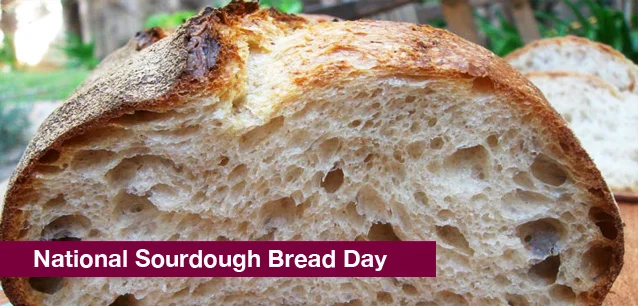 AD
AD
Today is: July 08
Scroll to explore events active on this date.
LEEP INK FEATURES

May Blooms: Events in May 2025
Along with October, May is one of the most densely packed months of the year. It's before the summer humidity and the last whole month of the school year. The weather is warming in t...

Sweet June 2025
The solstice on the 20th marks the onset of summer (Northern Hemisphere) or winter (Southern Hemisphere). Many people, particularly in Europe, North America and Asia, will be embarking o...

Events in April 2025
Spring has sprung in the north, and the first hints of Autumn are on the horizon in the south. April is the month spring (or fall) gets underway, and it is filled with religious celebrations, including the Mu...
About Sourdough Bread Day
Ends: Apr 01, 2024
DESCRIPTION:
Sourdough first appeared in Egypt around 1500 BC and is the first known fluffy bread (versus flat bread). Egyptians were avid beer brewers and drinkers. It is believed the yeast for the beer may have accidentally ended up on the dough waiting to be baked. When the brewer finally went to cook the dough, it had risen. Before sourdough bread, bakers didn't use yeast; all bread was flat (think matzah and crackers).
In 1849 sourdough became an institution during the Gold Rush in California. Master bakers from France set up shop in downtown San Francisco and began baking the bread. It traveled well with the miners and became a hit.
Sourdough bread's flavor is tangy, and the bread is easily identifiable by its large holes created from the carbon dioxide generated from yeast. Sourdough is the only bread that turns carbs into protein—sort of. The fermentation process partially digests the wheat proteins but not entirely, increasing the bread's protein, and fermentation is how it gets its tangy flavor.
VIDEOS
SUPPORTING DOCUMENTS
Currently, this event does not have supporting documents.
ADDITIONAL IMAGES
Currently, this event does not have supporting images.
Where would you like to go now?
 AD
AD


/footer-logo.svg)
